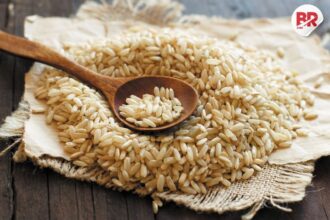
Is Your Watermelon Real? Here’s a Simple Way to Find Out
Summer is here, and nothing beats the joy of eating a juicy, sweet watermelon on a hot day. But what if that bright red fruit you just bought isn’t real?

Yes, it’s true. Some sellers inject watermelons with artificial colors, sugar water, or chemicals to make them look fresh and ripe. These fake fruits may look perfect, but they can be harmful to your health.
Let me tell you a quick story.
Ravi, a father of two, picked up a large watermelon from the local market. It looked shiny and red inside, but something was off. It had a strange smell, and the sweetness felt fake. Later, his daughter complained of a stomach ache. That’s when Ravi started wondering: was the fruit real?
You don’t have to guess like Ravi. Here’s how to check if a watermelon is real, with a few easy steps anyone can follow.
Look for Natural Signs First
Before you even buy a watermelon, you can look for some basic clues.
-
Check the color: A real watermelon has a yellow or creamy spot where it rested on the ground. If the skin is too perfect or bright all over, it might be fake.
-
Feel the weight: Pick it up. A genuine watermelon feels heavy for its size. A light one may have been injected with water or other substances.
-
Look at the stem end: Real watermelons have a dry, brown stem spot. If it’s green or too fresh, it may have been picked early or tampered with.
Also Read: Foods That Can Help Melt Liver Fat: Achieve a 20% Reduction Naturally
Do the Easy Home Test
Still not sure? Once you get home, try these simple tests:
-
Tap it: Knock gently on the fruit. If it makes a deep, hollow sound, it’s likely real. If the sound is dull or metallic, be careful.
-
Cut it open: The inside should be bright red with black seeds spread out. If the red looks too dark or the seeds are missing, it might be artificial.
-
Smell it: Trust your nose. Real watermelon has a fresh smell. If it smells like chemicals or has no smell at all, avoid eating it.
Also Read: Struggling With Bloating or Heat? This 500-Year-Old Remedy Might Be the Answer
Why It Matters
Eating a fake watermelon isn’t just about taste—it can affect your health. Chemicals added to fruits can cause allergic reactions, digestion problems, or worse over time.
That’s why learning how to check if watermelon is real is so important. It takes only a few minutes and helps protect your family. Plus, you support honest farmers who grow their fruits the right way.
Stay Smart While You Shop
Next time you go to the market, don’t just grab the prettiest watermelon. Take a second to tap, check the bottom, and smell the fruit.
Nature always leaves signs—if we just stop to notice them.
Stay safe. Eat clean. And enjoy your watermelon the way it’s meant to be: fresh, juicy, and real.
Also Read: The 2-Week Drink Plan Going Viral for Melting Liver Fat












